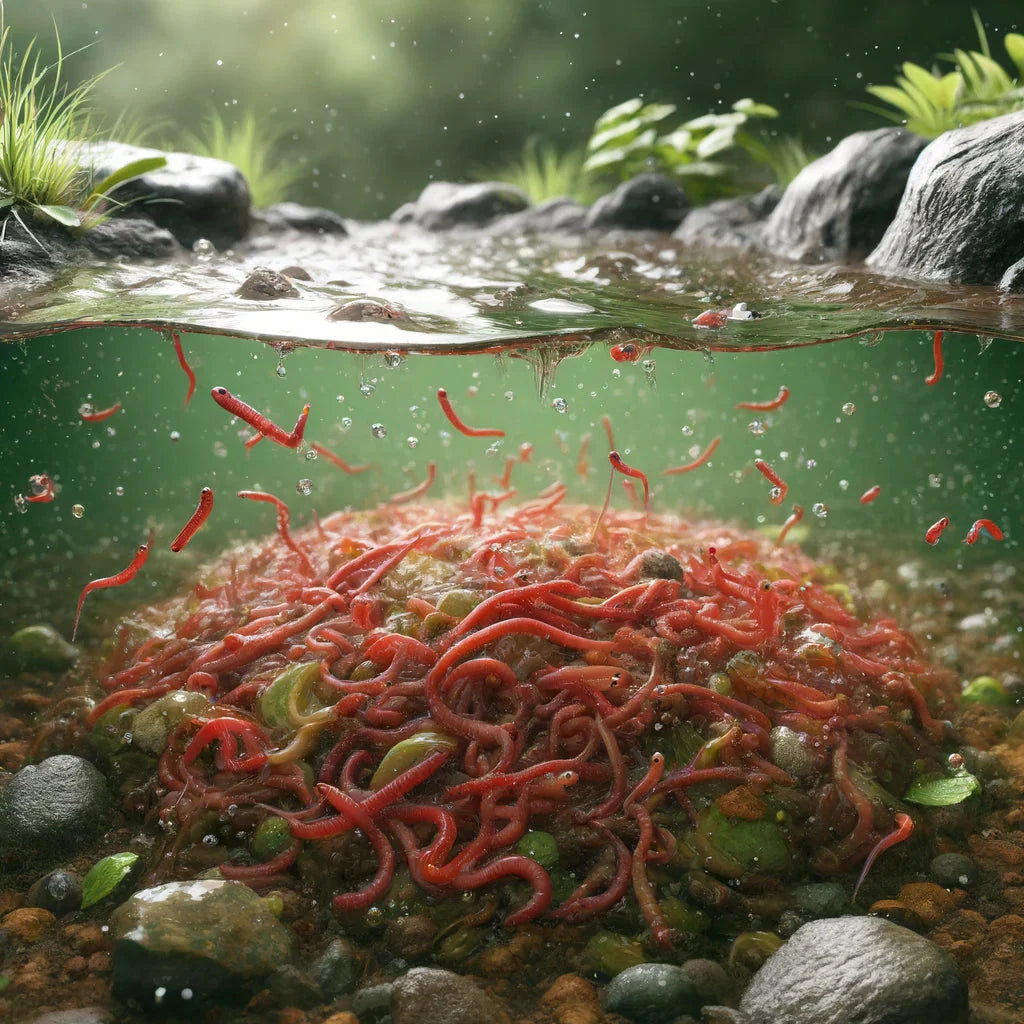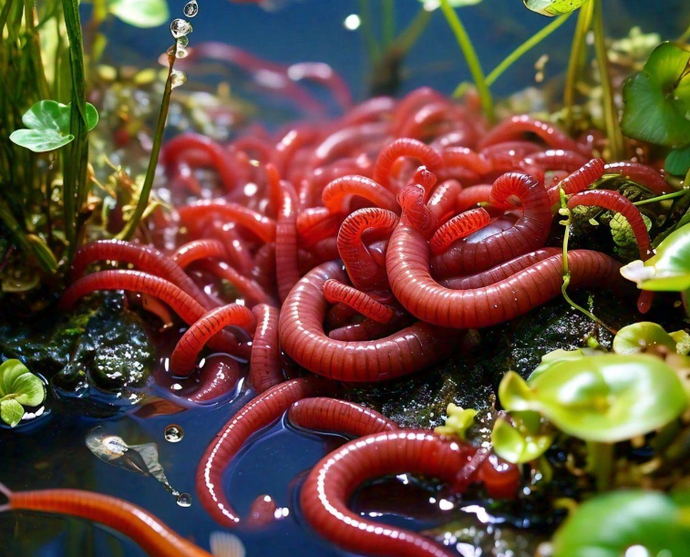Exactly How Red Wigglers Can Revolutionize Your Home Composting System
The integration of red wigglers right into home composting systems provides a standard shift in waste monitoring and soil enhancement. These worms, understood for their efficiency in breaking down natural products, not just quicken disintegration however additionally enhance the resulting compost with crucial nutrients.

Recognizing Red Wigglers
Comprehending the duty of red wigglers in composting is necessary for maximizing the benefits of this eco-friendly practice. Red wigglers, medically known as Eisenia fetida, are a types of earthworm specifically preferred for vermicomposting as a result of their exceptional capability to procedure organic waste successfully. These worms thrive in decomposing raw material, actively taking in cooking area scraps, yard waste, and other eco-friendly materials.
Unique from various other earthworm varieties, red wigglers choose a damp, rich atmosphere, that makes them excellent for garden compost containers. They replicate rapidly, doubling their population in a matter of weeks under ideal conditions. This respected breeding adds to the acceleration of the composting process, enhancing the malfunction of organic product right into nutrient-rich vermicompost.
Moreover, red wigglers can consume up to half their body weight in raw material daily, properly reducing waste volume and speeding up disintegration. Their digestive procedure not just transforms waste right into useful garden compost however likewise adds helpful microorganisms, even more improving the resulting product. Understanding these attributes of red wigglers is vital for anyone looking to implement an efficient home composting system, making sure a sustainable approach to lose monitoring.
Benefits of Vermicomposting
Vermicomposting supplies a wide variety of benefits that make it an eye-catching option for home gardeners and eco aware people. Among the most substantial advantages is its ability to efficiently convert kitchen scraps and organic waste right into nutrient-rich compost, improving soil wellness and promoting plant development. The resulting vermicompost is abundant in vital nutrients, including nitrogen, phosphorus, and potassium, which are vital for robust plant growth.
Furthermore, vermicomposting considerably minimizes household waste, drawing away organic materials from land fills and reducing methane discharges, a powerful greenhouse gas. This procedure not only relieves waste administration challenges however also sustains sustainability initiatives.
Additionally, the visibility of red wigglers in the composting procedure accelerates decomposition, leading to quicker manufacturing of garden compost contrasted to traditional techniques. red wigglers. This fast change indicates gardeners can enjoy a steady supply of top notch compost throughout the year
Moreover, vermicomposting fosters an interesting and educational experience for households, teaching youngsters regarding ecological stewardship and the relevance of reusing organic materials. In amount, the benefits of vermicomposting expand past plain garden compost production, adding to much healthier gardens and a more sustainable way of life.

Establishing Your Worm Container
Producing a worm bin is a simple procedure that can dramatically improve your composting initiatives. This will permit for air movement, important for the well-being of your red wigglers.
Next, prepare the bed linen material, which functions as an environment for the worms. A blend of shredded paper, cardboard, and coconut coir is perfect, as it preserves moisture and provides a comfy setting. Goal for a bed linen deepness of concerning six inches.
As soon as the bed linen is in location, moisten it lightly to produce a moist however not damp setting. Present your red wigglers, commonly around one extra pound for a basic container. The worms will certainly accommodate to their brand-new home and start processing organic find more waste.
Keeping a Healthy Worm Ecological Community
To keep your red wigglers flourishing, it's essential to keep an eye on and maintain a well balanced ecosystem within your worm bin. This includes carefully handling moisture degrees, which should be preserved at around 70-80%. Way too much dampness can bring about anaerobic problems, while inadequate moisture can cause the worms to dry.
Furthermore, providing appropriate aeration is vital. Consistently turning the garden compost assists to present oxygen, which sustains the worms' health and promotes efficient disintegration. It's additionally crucial to keep a suitable temperature level array, ideally between 55 ° F and 77 ° F. Extreme temperatures can worry and even eliminate the worms.
Feeding your red wigglers a balanced diet plan promotes their health. They prosper on a variety of organic materials, including vegetable scraps, coffee premises, and shredded paper. Stay clear of including citrus peels, meat, or milk, as these can disrupt the ecosystem and bring in insects.
Lastly, keeping an eye on the pH level is essential. Red wigglers prefer a somewhat acidic to neutral pH (around 6.0 to 7.0) Routinely checking these criteria will certainly help make certain a healthy and balanced setting for your worms, ultimately bring about a successful composting system.
Harvesting and Making Use Of Worm Castings
Harvesting worm spreadings is a rewarding procedure that improves your yard and improves dirt health. Worm castings, also referred to as vermicompost, are nutrient-rich organic plant foods produced by red wigglers during the composting process. To collect, permit the worms to damage down the raw material for numerous months, making sure that the product is dark, crumbly, and has an earthy odor.
There are numerous methods to collect spreadings. One common strategy is the "movement" method, where you press the completed garden compost away of the container and include fresh bedding and food to the opposite. The worms will move to the brand-new food source, enabling you to quickly collect the castings from the original side. You can make use of a screen or filter to divide the worms from the spreadings, although this technique might be more labor-intensive.
As soon as harvested, worm castings can be used straight to yard beds, utilized as a soil amendment, or brewed right into a nutrient-rich liquid fertilizer. Incorporating worm spreadings into your horticulture regimen not only boosts plant development yet additionally boosts soil framework and microbial task, making it an essential part for lasting horticulture practices.
Conclusion
In conclusion, red wigglers stand for a transformative remedy for home composting systems. red wigglers. The assimilation of red wigglers into composting techniques offers a functional method to waste monitoring and ecological stewardship.
Comments on “Organic red worms: Perfect for sustainable gardening”